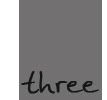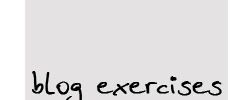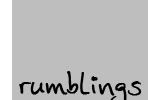Assignment TWO aye.
For assignment two part a, we're supposed to take photos that reflect the following technicalities--fast/slow shutter, big/small aperture, high/low ISO. We took the photos in sets, so as to greater illustrate the different effects produced by using different techniques.
Shutter speed.

1/6 sec, 30mm, f/16
Taken with a slower shutter speed, the water flowing down looked smooth and silky.

1/83 sec, 30mm, f/4.5
Taken with a faster shutter speed, water looked as if it was frozen in mid-air.

1/2 sec, 10mm, f/22
Slow shutter speed to capture motion blur by caused by people walking.

1/16 sec, 10mm, f/8
Faster shutter speed used. In contrast, people walking are frozen in motion, causing a time freeze effect.

1/8 sec, 14mm, f/8
Same thing, slow shutter speed. However because the basker is relatively still, he did not have any motion blur. The contrast between the fast-moving pedestrians and the still basker relates how in a fast-paced city, we may neglect those who are left behind. And also how we may be so caught up in our busyness that we fail to appreciate those around us.

1/83 sec, 14mm, f/4
A faster shutter speed freezes both the basker and the pedestrians. Again gives a time freeze effect.
Aperture.

1/197 secc, 24mm, f/4
Small aperture value, with focus on the nearest and biggest yellow structure. Background is blurred.
1.6 sec, 24mm, f/22.6
Big aperture value, hence everything is in focus.
1/16 sec, 17mm, f/4
Again, small aperture value, focus is only on the nearest yellow flower. Background is blurred.
1.3 sec, 17mm, f/18.2
In contrast, everything is in focus on this photo. Big aperture value.
1/16 sec, 17mm, f/4
1.3 sec, 17mm, f/18.2
ISO.
Basically ISO values changes the light sensitivity of the camera. So what I did was to take several photos using different ISO values, while keeping the aperture, shutter speed and lens constant.
1/664 sec, 21mm, f/8, ISO 400
1/664 sec, 21mm, f/8, ISO 800
1/664 sec, 21mm, f/8, ISO 1600
Yupps, that's basically all for assignment two aye. =)
Pls leave comments!
Labels: assignment two aye







2 Comments:
gosh. this module really seems like loads of fun! anw, e photos u n ur proj mates took are great. (: just viewed thru e entire blog, learned some photography terms. e.g. i nv knew small aperture value is called as it is. interesting. all e best for this mod! ((=
-jalea
September 24, 2008 at 2:28 PM
hee. go take this module lah. :)
September 24, 2008 at 9:10 PM
Post a Comment
Subscribe to Post Comments [Atom]
<< Home